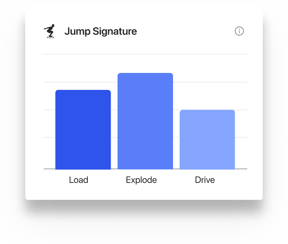
With offseason baseball training in full swing let’s take a closer look into how training is often approached; By position. A common approach seen throughout many programs and organizations is to give pitchers different programming than position players. After all, it makes sense since they have different skill sets, right? What’s often overlooked is that many types of movers make up the same position, and skill should not dictate programming.
One thing that we have noticed at Sparta Science is that similar force profiles tend to be associated with certain injuries, regardless of sport. For example, we recently had a pitcher who tore his Achilles, which is so unusual for pitchers to do but when you look at his force profile it’s to no surprise that it happened. Across the board, we consistently see low Drive (relative concentric impulse) associated with Achilles ruptures.

High LOAD/EXPLODE, low DRIVE scan
Sufficient Drive represents the ability to apply forces efficiently allowing for better utilization of energy that has been both created (Load) and transferred (Explode). One of the main costs of a lower drive is wasted energy that is often seen in the form of fatigue, what looks like an “out of shape” individual is often an inefficient force applier. Another concern with low Drive is a decrease in the dissipation of force and reciprocal inhibition which often contribute to muscle strain injuries, or in this case rupturing the Achilles.
Did you know that in the last five years Achilles injuries have doubled? It’s gone from an injury barely heard about to getting consistent slo-mo replays on ESPN to see it completely pop. Why is it trending that way? One theory is that improving Drive just really isn’t that sexy. Training rate of force and power are all too common today, yet obtaining greater active ranges of motion and mobility to actually apply those forces is often neglected. Regardless of sport or skill, this type of mover is at higher risk for this injury.
The bottom line is that a pitcher doesn’t need to train like a pitcher. They need to train for improved movement efficiency, and basing the programming on the position is doing each individual mover a disservice. Achilles ruptures are like guitar strings; they slowly wear out until one day it just pops. Each day you choose to train an athlete based on their position they could be getting another day closer to the next highlight.